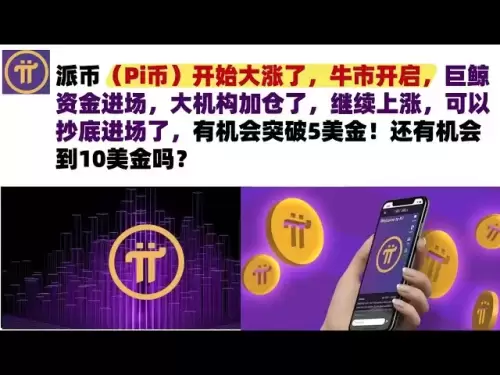-
 Bitcoin
Bitcoin $116700
0.48% -
 Ethereum
Ethereum $4213
6.27% -
 XRP
XRP $3.280
1.22% -
 Tether USDt
Tether USDt $1.000
0.02% -
 BNB
BNB $805.1
2.46% -
 Solana
Solana $180.2
2.65% -
 USDC
USDC $0.0000
0.02% -
 Dogecoin
Dogecoin $0.2412
8.50% -
 TRON
TRON $0.3356
-1.11% -
 Cardano
Cardano $0.8108
3.59% -
 Hyperliquid
Hyperliquid $43.89
8.53% -
 Chainlink
Chainlink $21.15
10.75% -
 Stellar
Stellar $0.4502
1.41% -
 Sui
Sui $3.935
4.69% -
 Bitcoin Cash
Bitcoin Cash $570.7
-1.75% -
 Hedera
Hedera $0.2636
3.28% -
 Avalanche
Avalanche $24.25
4.48% -
 Ethena USDe
Ethena USDe $1.001
0.03% -
 Litecoin
Litecoin $122.0
-0.08% -
 Toncoin
Toncoin $3.445
2.68% -
 UNUS SED LEO
UNUS SED LEO $8.979
-0.08% -
 Shiba Inu
Shiba Inu $0.00001379
6.73% -
 Uniswap
Uniswap $10.91
2.00% -
 Polkadot
Polkadot $4.106
5.39% -
 Dai
Dai $1.000
0.02% -
 Pepe
Pepe $0.00001227
9.07% -
 Bitget Token
Bitget Token $4.507
0.72% -
 Cronos
Cronos $0.1576
3.40% -
 Monero
Monero $272.0
-1.68% -
 Ethena
Ethena $0.7502
21.27%
How to avoid buying at a high price when buying and selling DOGE?
To avoid buying DOGE at high prices, use technical analysis, set price alerts, employ dollar-cost averaging, utilize limit orders, and avoid emotional trading driven by FOMO.
Apr 20, 2025 at 03:08 am
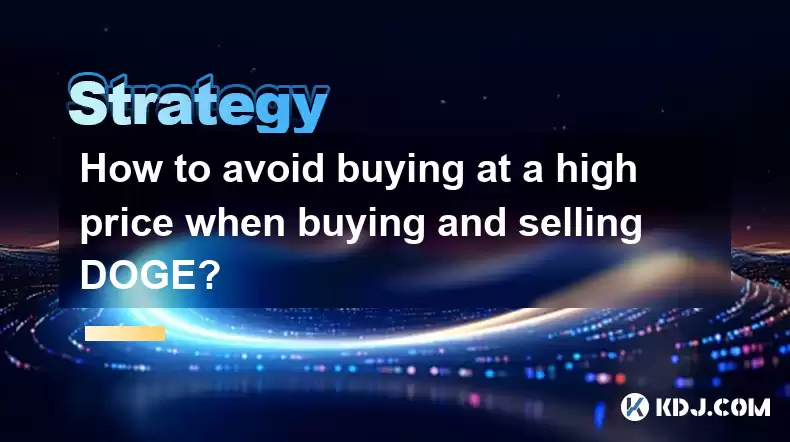
How to Avoid Buying at a High Price When Buying and Selling DOGE?
When it comes to trading cryptocurrencies like Dogecoin (DOGE), one of the biggest challenges traders face is avoiding buying at peak prices. This can lead to significant losses if the market turns bearish shortly after your purchase. In this article, we will explore various strategies and tools that can help you make more informed decisions and avoid buying DOGE at high prices.
Understanding Market Trends and Timing
Market analysis is crucial when trying to avoid buying at high prices. By understanding the general trends and cycles of the cryptocurrency market, you can better time your purchases.
- Technical Analysis: Use tools like moving averages, Relative Strength Index (RSI), and Bollinger Bands to identify potential overbought conditions. For instance, if the RSI is above 70, it might indicate that DOGE is overbought and could be due for a correction.
- Fundamental Analysis: Keep an eye on news and developments that could affect DOGE's price. Positive news can drive prices up, while negative news can lead to a drop. For example, endorsements from high-profile figures or partnerships can cause a surge in price.
- Sentiment Analysis: Monitor social media and forums to gauge the general sentiment towards DOGE. High levels of excitement and FOMO (Fear Of Missing Out) can often signal a peak in price.
Setting Up Price Alerts
One effective way to avoid buying at high prices is to set up price alerts on your trading platform or through third-party apps.
- Choose a Trading Platform: Platforms like Binance, Coinbase, and Kraken offer price alert features. Select the platform that best suits your needs.
- Set Your Alert: Decide on a price threshold that you consider high. For example, if DOGE is currently trading at $0.30, you might set an alert for $0.35.
- Monitor Alerts: When the price reaches your set threshold, you will receive a notification. This gives you the opportunity to reassess the market before making a purchase.
Using Dollar-Cost Averaging (DCA)
Dollar-Cost Averaging is a strategy that involves spreading out your investment over time, rather than making a lump-sum purchase. This can help mitigate the risk of buying at a high price.
- Determine Your Investment Amount: Decide how much you want to invest in DOGE over a certain period. For example, you might choose to invest $100 per month.
- Set Up Regular Purchases: Use your trading platform to automate these purchases. This way, you will buy DOGE at different price points, reducing the impact of buying at a peak.
- Review and Adjust: Periodically review your strategy and adjust your investment amount or frequency based on market conditions.
Utilizing Limit Orders
Limit orders allow you to set a specific price at which you want to buy DOGE. This can help you avoid buying at a high price by ensuring you only purchase when the market reaches your desired level.
- Access Your Trading Platform: Log into your trading account on platforms like Binance or Coinbase.
- Select DOGE: Navigate to the DOGE trading pair you wish to buy.
- Set Your Limit Order: Enter the price at which you want to buy DOGE. For example, if DOGE is currently at $0.30, you might set a limit order for $0.28.
- Place the Order: Once your limit order is placed, it will execute automatically if the market reaches your specified price.
Avoiding FOMO and Emotional Trading
Emotional trading driven by FOMO can lead to buying at high prices. It's important to maintain a disciplined approach to trading.
- Set Clear Goals: Define your investment goals and stick to them. Whether you're looking for short-term gains or long-term growth, having clear objectives can help you avoid impulsive decisions.
- Use a Trading Plan: Develop a trading plan that outlines your entry and exit points, risk management strategies, and investment criteria. Stick to this plan to avoid making decisions based on emotions.
- Take Breaks: If you find yourself getting caught up in the excitement of the market, take a step back. Sometimes, a break from trading can help you regain perspective and make more rational decisions.
Leveraging Historical Data
Historical data can provide valuable insights into DOGE's price movements and help you avoid buying at high prices.
- Analyze Past Trends: Look at DOGE's historical price charts to identify patterns and cycles. For example, if DOGE tends to peak every six months, you might want to avoid buying near these peaks.
- Use Historical Volatility: Understand DOGE's volatility to set realistic expectations. High volatility can lead to rapid price changes, making it more important to time your purchases carefully.
- Backtest Your Strategy: Use historical data to backtest your trading strategy. This can help you refine your approach and avoid buying at high prices in the future.
Frequently Asked Questions
Q: Can using stop-loss orders help avoid buying at high prices?
A: Stop-loss orders are primarily used to limit losses on existing positions rather than to avoid buying at high prices. However, they can be part of a broader risk management strategy that helps you maintain discipline and avoid emotional trading.
Q: How can I tell if DOGE is at a peak price?
A: Identifying peak prices can be challenging, but you can use a combination of technical indicators, sentiment analysis, and historical data to make an educated guess. Look for signs of overbought conditions, high levels of excitement on social media, and historical patterns that suggest a peak may be near.
Q: Is it better to buy DOGE during a dip or at a peak?
A: Generally, buying during a dip can offer better value and reduce the risk of buying at a high price. However, timing the market perfectly is difficult, and using strategies like dollar-cost averaging can help you buy at various price points, reducing the impact of buying at a peak.
Q: Can I use automated trading bots to avoid buying at high prices?
A: Automated trading bots can be programmed to execute trades based on specific criteria, including price thresholds. However, they are not foolproof and require careful setup and monitoring to ensure they align with your trading strategy and risk tolerance.
Disclaimer:info@kdj.com
The information provided is not trading advice. kdj.com does not assume any responsibility for any investments made based on the information provided in this article. Cryptocurrencies are highly volatile and it is highly recommended that you invest with caution after thorough research!
If you believe that the content used on this website infringes your copyright, please contact us immediately (info@kdj.com) and we will delete it promptly.
- Trump, Crypto Vehicle, and WLFI Tokens: A New York Minute on the Latest Buzz
- 2025-08-10 00:30:12
- Wheat Penny Fortune: Unearthing Valuable Coins in Your Pocket Change
- 2025-08-10 00:35:19
- AI Coin Mania: Dubai Millionaires Eye 20x Gains!
- 2025-08-09 23:10:12
- ChatGPT's Hot Takes: Meme Coins to Buy Now for a Wild 2025!
- 2025-08-09 23:10:12
- Jurassic Park Vibes in Your Pocket: The Colourful Canadian Coin Featuring a Dinosaur Eye
- 2025-08-09 23:50:12
- Altcoins on the Radar: VeChain, Ethereum, and the Shifting Crypto Landscape
- 2025-08-09 23:50:12
Related knowledge
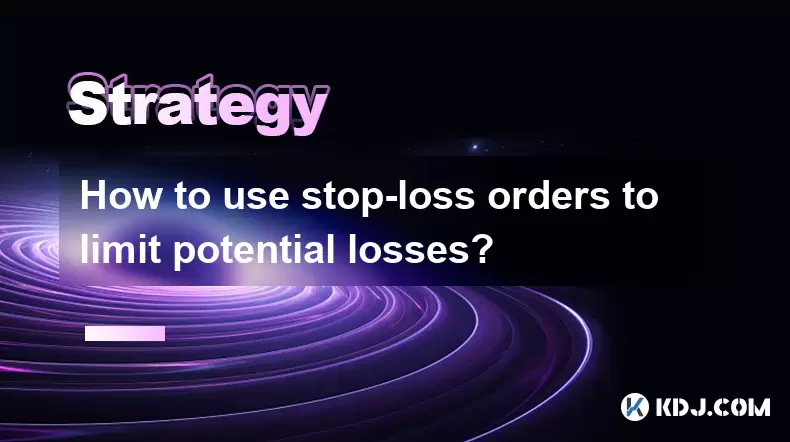
How to use stop-loss orders to limit potential losses?
Aug 08,2025 at 02:01pm
Understanding Stop-Loss Orders in Cryptocurrency TradingA stop-loss order is a risk management tool used by traders to automatically sell a cryptocurr...
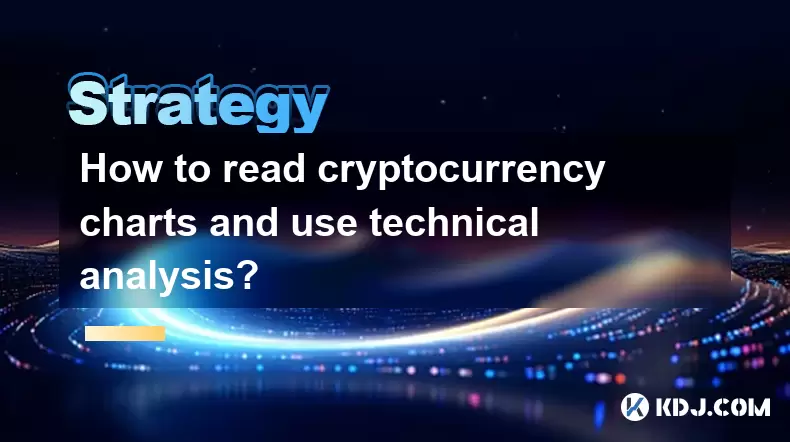
How to read cryptocurrency charts and use technical analysis?
Aug 08,2025 at 11:08am
Understanding the Basics of Cryptocurrency ChartsCryptocurrency charts are graphical representations of price movements over time. These charts are es...
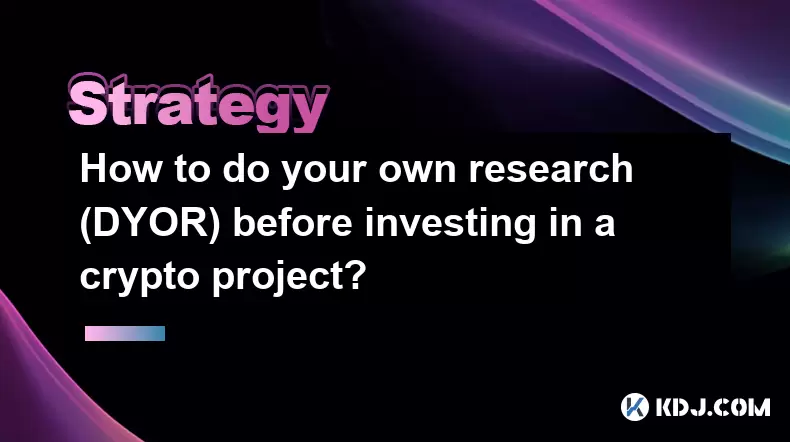
How to do your own research (DYOR) before investing in a crypto project?
Aug 08,2025 at 09:07pm
Understanding the Core Principles of DYOR in CryptocurrencyEngaging in due diligence before investing in any cryptocurrency project is essential to mi...
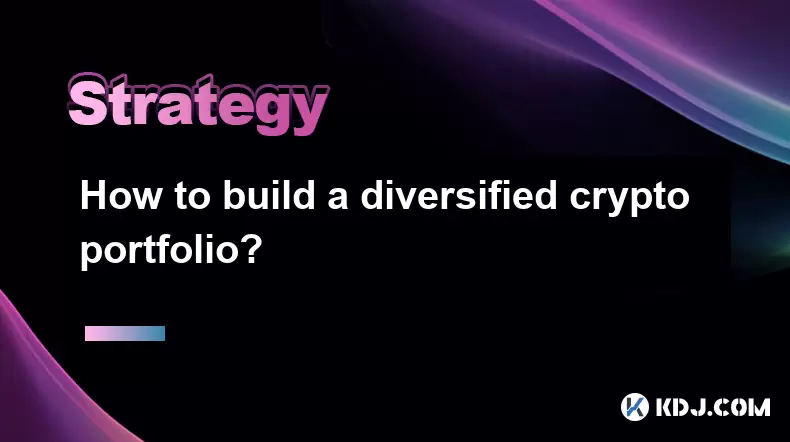
How to build a diversified crypto portfolio?
Aug 09,2025 at 12:21pm
Understanding the Importance of Diversification in CryptoDiversification in the cryptocurrency space is a strategy used to reduce risk by spreading in...

How to avoid common crypto investment mistakes?
Jul 13,2025 at 01:35am
Understanding the Risks of Crypto InvestmentInvesting in cryptocurrency can be highly rewarding, but it also comes with significant risks. One of the ...

What is a long-short crypto strategy?
Jul 15,2025 at 10:56am
Understanding the Basics of a Long-Short Crypto StrategyA long-short crypto strategy is an investment approach where traders simultaneously take long ...

How to use stop-loss orders to limit potential losses?
Aug 08,2025 at 02:01pm
Understanding Stop-Loss Orders in Cryptocurrency TradingA stop-loss order is a risk management tool used by traders to automatically sell a cryptocurr...

How to read cryptocurrency charts and use technical analysis?
Aug 08,2025 at 11:08am
Understanding the Basics of Cryptocurrency ChartsCryptocurrency charts are graphical representations of price movements over time. These charts are es...

How to do your own research (DYOR) before investing in a crypto project?
Aug 08,2025 at 09:07pm
Understanding the Core Principles of DYOR in CryptocurrencyEngaging in due diligence before investing in any cryptocurrency project is essential to mi...

How to build a diversified crypto portfolio?
Aug 09,2025 at 12:21pm
Understanding the Importance of Diversification in CryptoDiversification in the cryptocurrency space is a strategy used to reduce risk by spreading in...

How to avoid common crypto investment mistakes?
Jul 13,2025 at 01:35am
Understanding the Risks of Crypto InvestmentInvesting in cryptocurrency can be highly rewarding, but it also comes with significant risks. One of the ...

What is a long-short crypto strategy?
Jul 15,2025 at 10:56am
Understanding the Basics of a Long-Short Crypto StrategyA long-short crypto strategy is an investment approach where traders simultaneously take long ...
See all articles


























